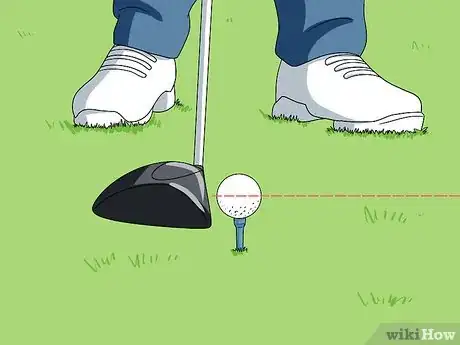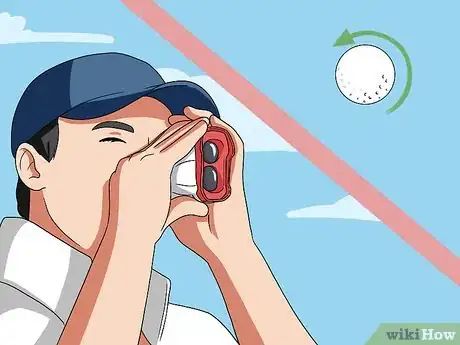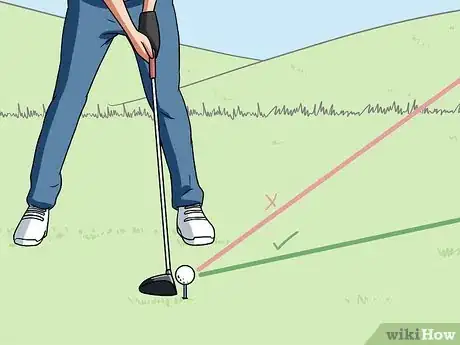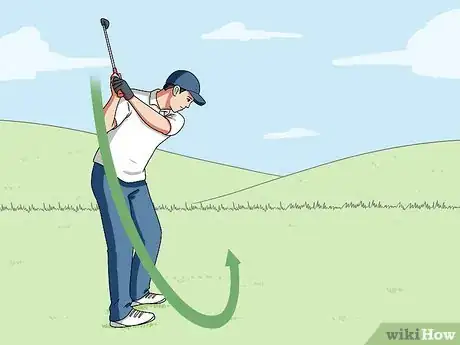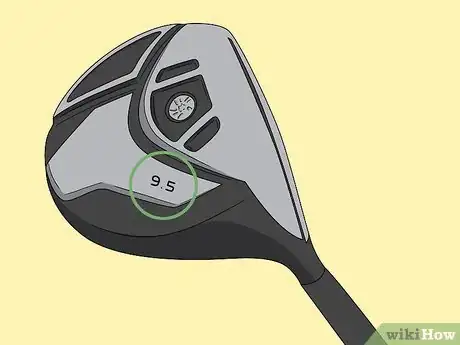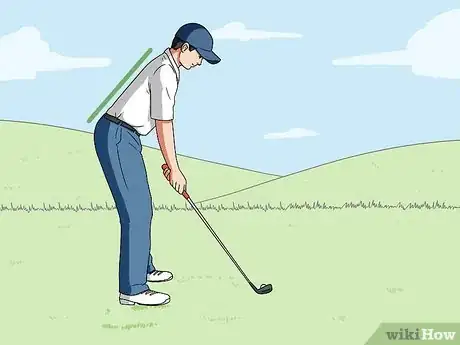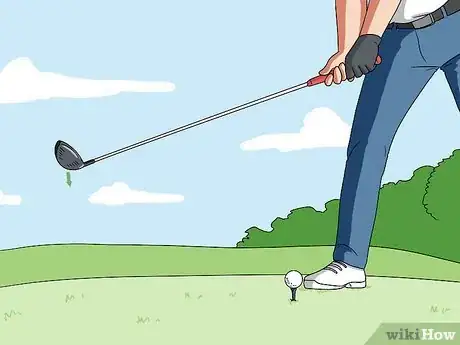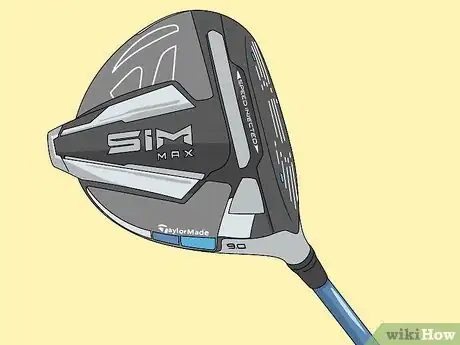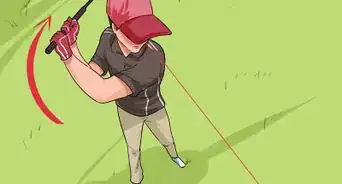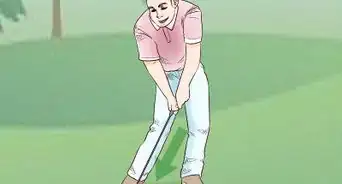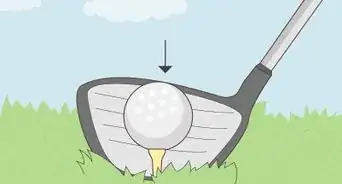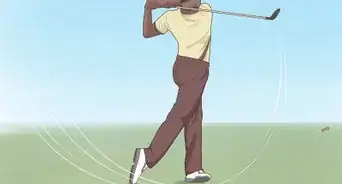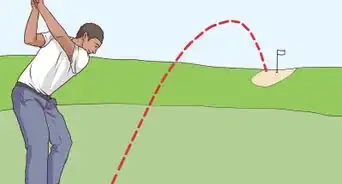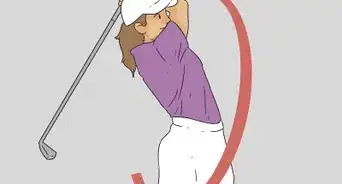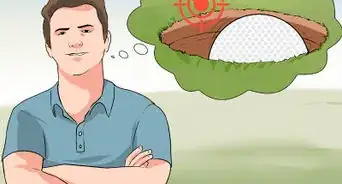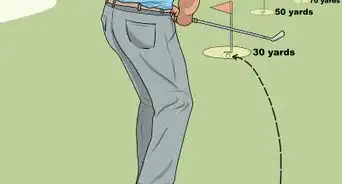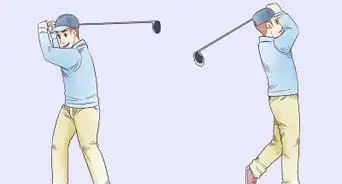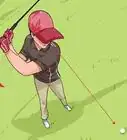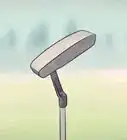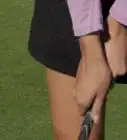This article was co-authored by Michael Metz and by wikiHow staff writer, Hannah Madden. Michael Metz is a Golf Instructor and the Director of Instruction at Simi Hills Golf Course. With more than 15 years of experience, Michael is adept at coaching all facets of Golf. Mike uses technology, such as Flightscope, V1 Swing Suite, Blast Motion, and BodiTrak pressure mapping, to provide advanced golf training with quick results.
There are 13 references cited in this article, which can be found at the bottom of the page.
This article has been viewed 61,397 times.
Drivers are usually the first clubs you reach for on the golf course, which makes them super important for getting distance. If you notice that you’re getting a lot of height but not a lot of length with your driver, you could be dealing with too much spin. Thankfully, there are a few different ways you can lower the spin on your driver to get the maximum distance and start your game off right.
Steps
Why does my driver have so much backspin?
-
1You might be hitting the ball too low on your golf club. A good shot is made by hitting the golf ball dead center on your club. As Golf Teacher Michael Metz explains, "the most efficient you can be on a driver is high center on the face." So, if you’re going too low or off to the side, it could cause your spin rate to go up. Metz goes on to suggest, "what I have my clients do is we usually take some foot spray and spray the face and then when the ball makes impact with the face, we can see where it's made impact and how to improve from there." You can also check your positioning by sprinkling baby powder or antifungal powder on your golf club before hitting the ball; then, check the mark made in the powder on your club to see where the ball made contact.[1]
-
2Your angle of attack could be too high. This is the most common reason that golfers have too much spin on their drivers. According to Golf Teacher Michael Metz, "a toe strike or a heel strike vastly changes consistency." As you swing your club, pay attention to the angle you’re making before you hit the ball. The higher the angle is, the higher your spin rate will be. To lower your spin rate, simply lower your angle of attack as you swing the club before you make contact with the ball.[2]
How do you hit a driver correctly?
-
1Set yourself up with your weight on your back foot. Position your body so that the golf ball is just inside your front foot before you swing. Tilt your body slightly backward to put all of your weight on your back foot, or the foot furthest away from the ball.[4]
-
2Turn your front shoulder toward the ball when you swing. This will help you get a full range of motion for the most distance. Think about swinging the club back so far that your front shoulder lines up with the golf ball.[5]
-
3Swing your body through the moment of impact. The looser your hips and wrists are, the better you’ll hit the ball. As you swing downward toward the golf ball, follow through so your hips face your front foot at the very end of the swing.[6]
Why am I hitting the ground first with my driver?
-
1You might be dropping your weight too low in the downswing. To fix this, keep your back straight as you shift your weight onto your back foot. Try not to bend your spine, and keep your shoulders square instead of leaning over to the side.[12]
-
2You could be releasing your club too early. To fix this, tee up your ball and take a practice swing over the ball, trying not to hit it. Listen for the “swoosh” as you swing your club; if you hear it before your club is over the ball, you could be releasing too early and swinging down too low.[13]
What driver helps with a slice?
-
1The TaylorMade SIM Max D Driver is very forgiving. This driver has a very low center of gravity, meaning that it can reduce side spinoff. It’s great for long, smooth shots, even when you don’t hit the ball perfectly in the center of the club.[16]
-
2The Cobra Men’s F-Max Offset Driver is tailor-made to reduce slice. It’s not the prettiest or the most customizable, but it has more mass in the driver head to give you a larger surface area when you hit the ball. If you only care about anti-slice, this is the driver for you.[17]
References
- ↑ https://www.youtube.com/watch?t=99&v=uEDGlgbuhr8&feature=youtu.be
- ↑ https://www.youtube.com/watch?t=215&v=uEDGlgbuhr8&feature=youtu.be
- ↑ https://www.youtube.com/watch?t=52&v=uEDGlgbuhr8&feature=youtu.be
- ↑ https://golfinsideruk.com/how-to-hit-a-driver/
- ↑ https://www.golfdigest.com/story/butch-harmon-best-driving-tips
- ↑ https://golfinsideruk.com/how-to-hit-a-driver/
- ↑ https://golftips.golfweek.usatoday.com/reduce-backspin-drive-20473.html
- ↑ https://golftips.golfweek.usatoday.com/lower-launch-angle-drive-20505.html
- ↑ https://www.youtube.com/watch?t=113&v=uleQ-RJMFGE&feature=youtu.be
- ↑ https://golftips.golfweek.usatoday.com/whether-use-105-95-loft-20588.html
- ↑ https://golfinsideruk.com/how-to-hit-a-driver/
- ↑ https://www.youtube.com/watch?t=7&v=fRsQocejsPc&feature=youtu.be
- ↑ https://www.youtube.com/watch?t=30&v=fRsQocejsPc&feature=youtu.be
- ↑ https://golftips.golfweek.usatoday.com/lower-launch-angle-drive-20505.html
- ↑ https://www.youtube.com/watch?t=174&v=4STWsFzFh9E&feature=youtu.be
- ↑ https://golfinsideruk.com/best-driver-set-up-for-slicers/
- ↑ https://golfinsideruk.com/best-driver-set-up-for-slicers/
